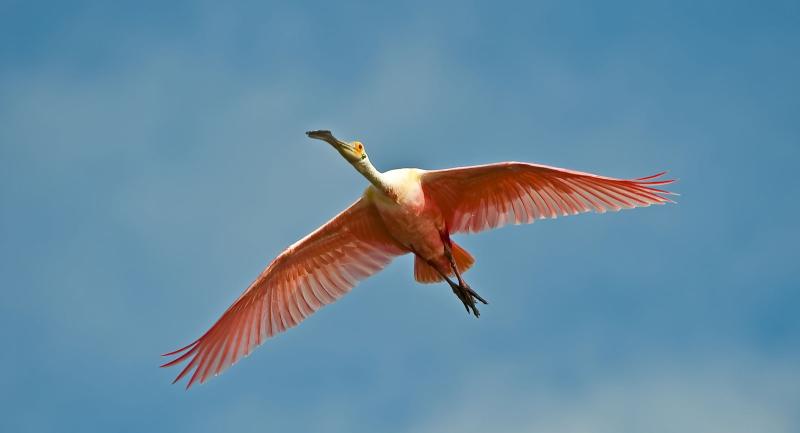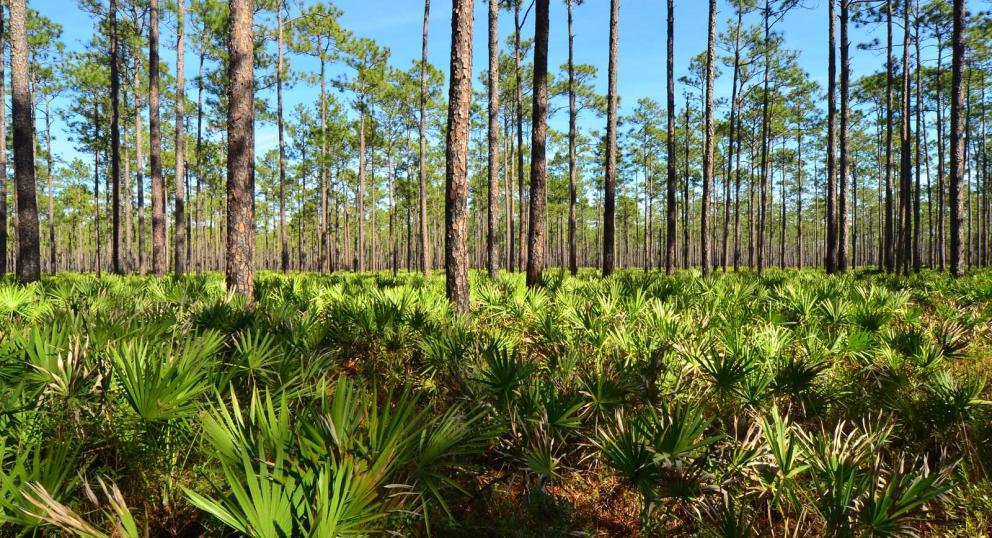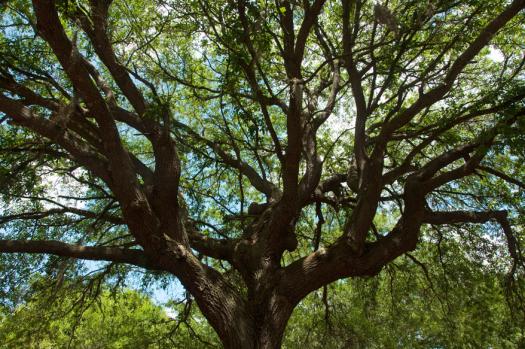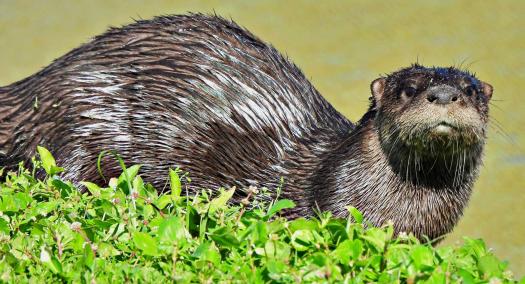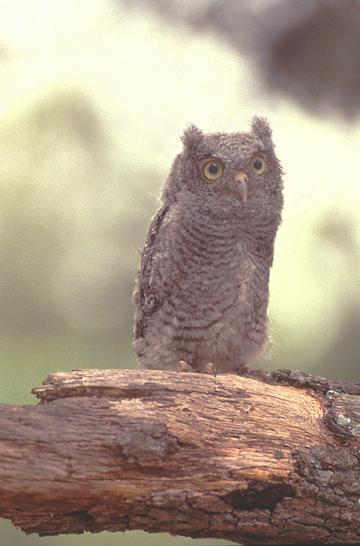The watershed includes a rich mosaic of natural habitats: hardwood swamps, pine flatwoods, sandhills, oak hammocks, salt barrens and cypress domes.
Saw palmetto thrives in the watershed’s flatwoods and sandhills where the sandy soil is well-drained. It forms dense colonies with ground-hugging, serpentine trunks and clusters of green, fanlike fronds.
A variety of trees also make their home here, including sweet gum, water locust, laurel oak, slash pine and the bald cypress. Two tree species dominate along the river and throughout the surrounding lowlands: the sabal palm, which is Florida’s state tree, and the live oak.
Live oaks, Quercus virginiana, are large, stately trees abundant throughout the Alafia River watershed. They form in groves called hammocks. These hammocks are spacious, open and airy. Unlike other oaks, live oaks are evergreens. That’s how they got their name, appearing to be “alive” in the dead of winter when other trees are leafless.
Possums, raccoons, grey foxes and white-tailed deer are the watershed’s most common larger mammals. Skunks, otters and fox squirrels are sometimes seen as well.
Numerous reptile species also inhabit the watershed, including the American alligator and Eastern indigo snake, and gopher tortoises burrow in the loose, sandy soil.
Florida is home to an amazing array of birds — with almost 500 unique kinds and just as many beautiful viewing spots. The Alafia Banks (also known as the Richard T. Paul Sanctuary) is the most productive nesting colony in Florida and is hailed as the Audubon Society’s flagship bird sanctuary. Woodstorks, reddish egrets and roseate spoonbills are among some 20 species that return to the area each year.

